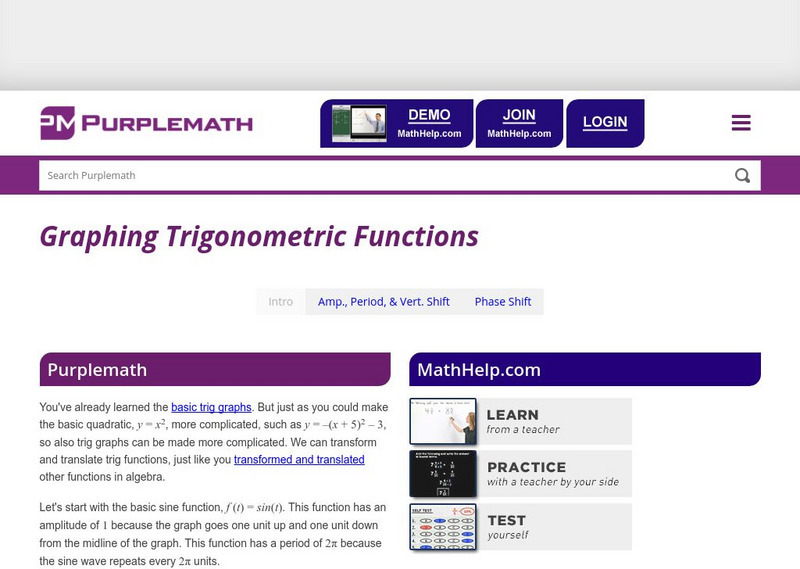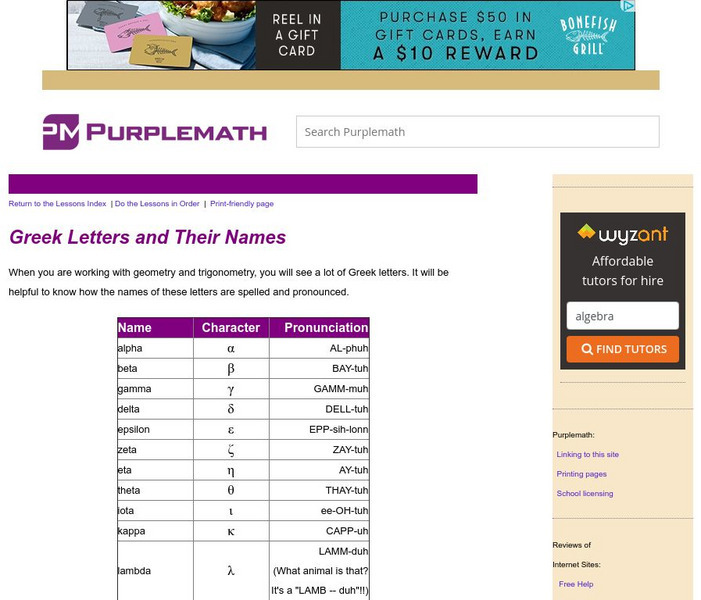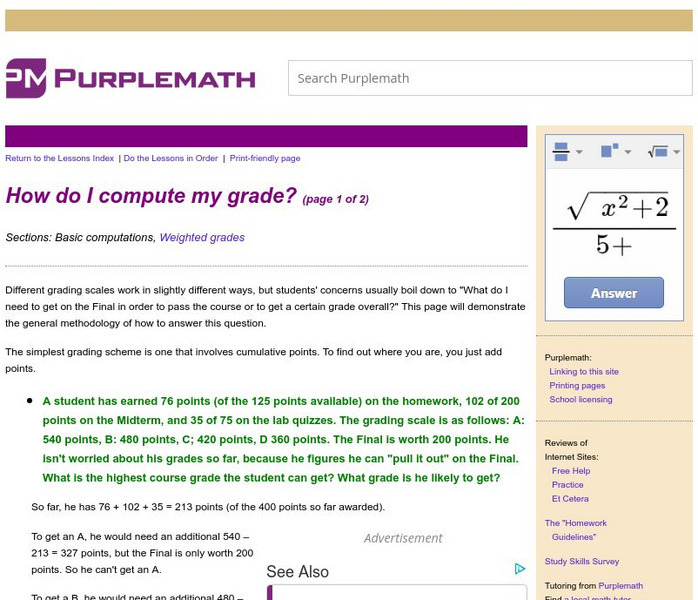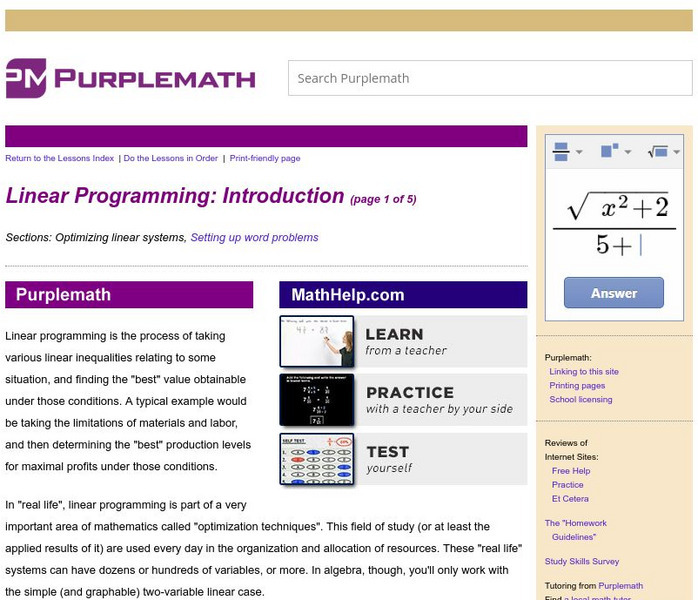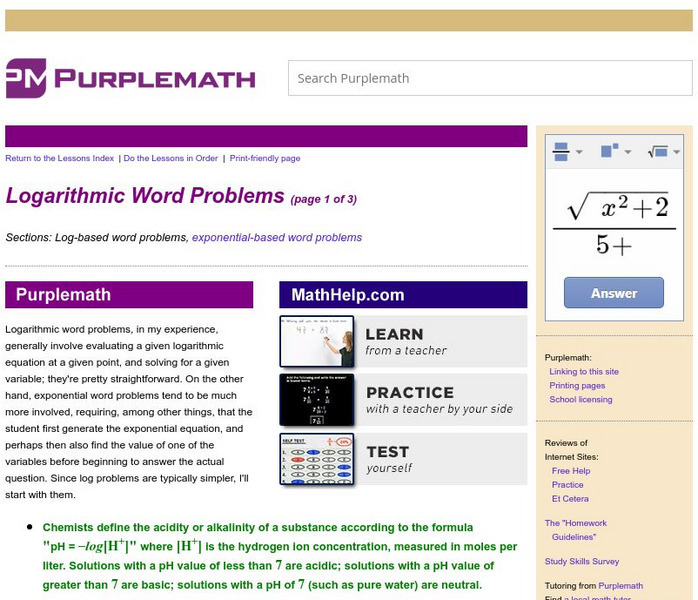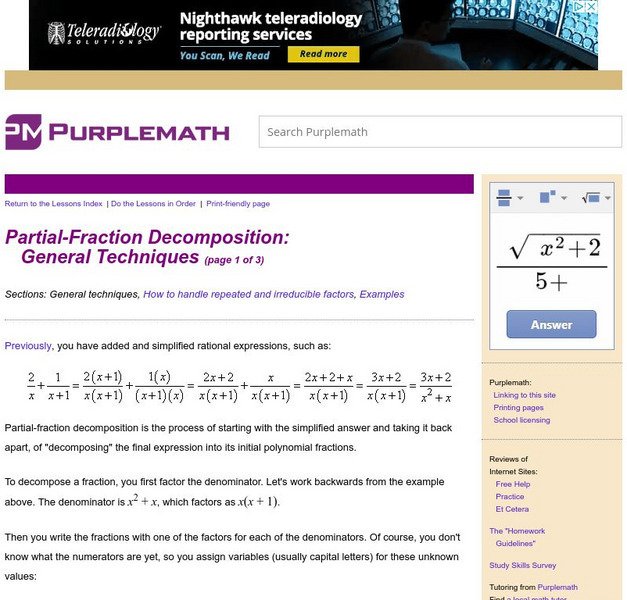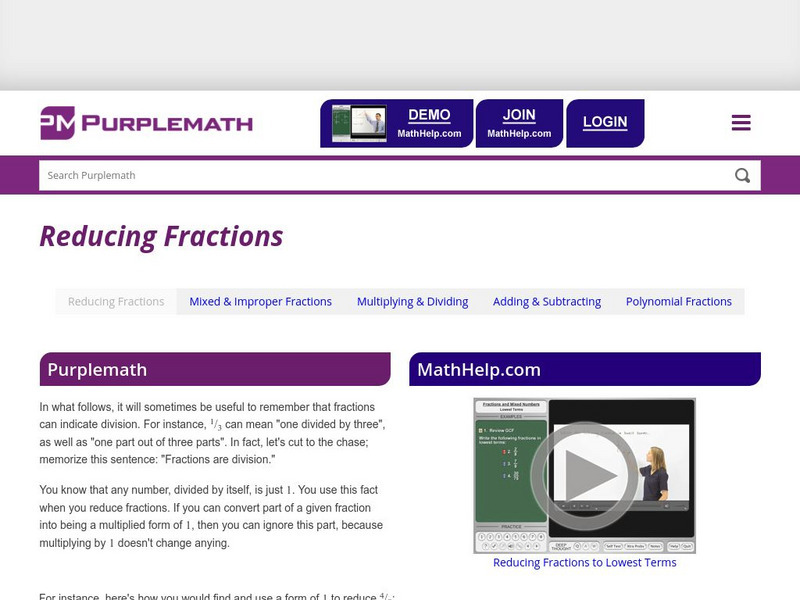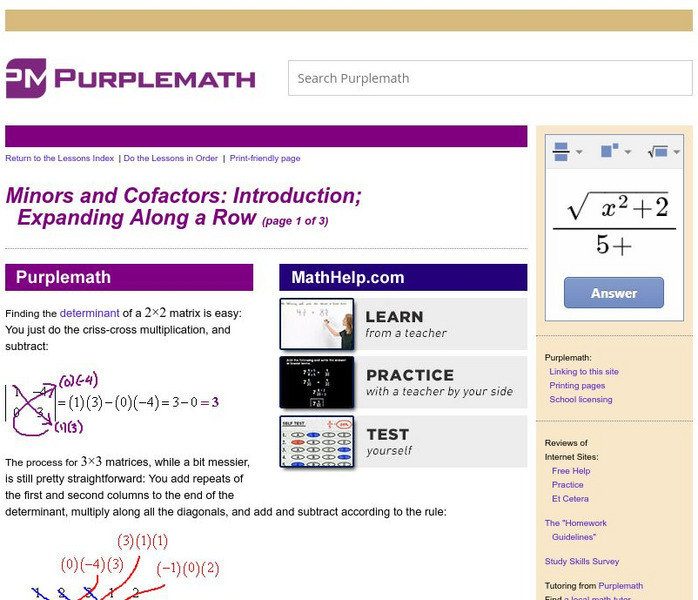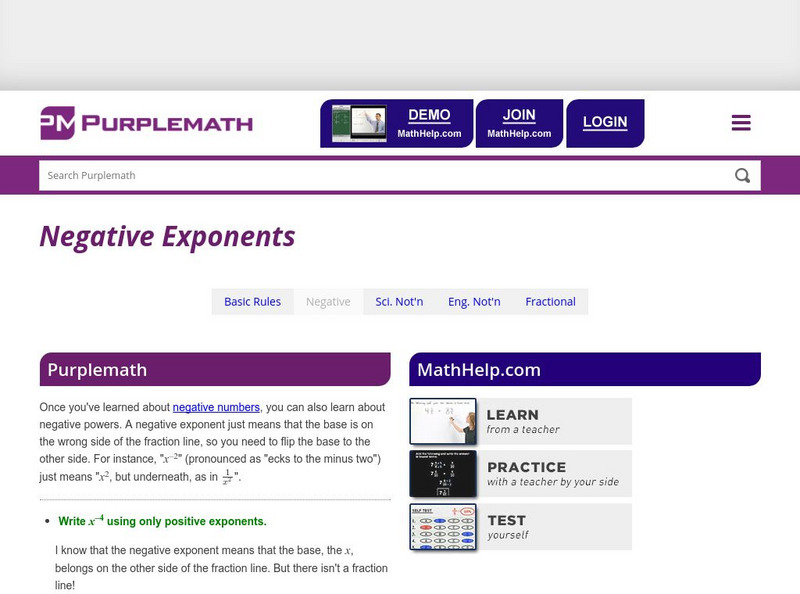Purple Math
Purplemath: Graphing Quadratic Functions: Introduction
The most basic quadratic is y = x2. The general technique for graphing quadratics is the same as for graphing linear equations. The quadratics graph as curvy lines (called "parabolas"), rather than the straight lines generated by linear...
Purple Math
Purplemath: Graphing Trigonometric Functions
This resource explains how to relate constants in trigonometric function to amplitudes, vertical shifts, periods, and horizontal or phase shifts with the help of many solved examples for various trigonometric functions.
Purple Math
Purplemath: How Can 0.9999 = 1?
This resource discusses the relationship between '0.999' and '1' and provides various proofs of their equality.
Purple Math
Purplemath: Greek Letters and Their Names
When you are working with geometry and trigonometry, you will see a lot of Greek letters. It will be helpful to know how the names of these letters are spelled and pronounced.
Purple Math
Purplemath: How Do I Compute My Grade?
Demonstrates how to figure out what you need on the Final to pass your course, given a typical grading scheme.
Purple Math
Purplemath: Linear Programming: Introduction
Linear programming is a part of a very important area of mathematics called "optimization techniques". This field of study (or at least the applied results of it) are used every day in the organization and allocation of resources. Linear...
Purple Math
Purplemath: Logarithmic Word Problems
Logarithmic word problems generally involve evaluating a given logarithmic equation at a given point, and solving for a given variable; they're pretty straightforward. This resource contains worked examples to demonstrate the reasoning...
Purple Math
Purplemath: Mean, Median, Mode, and Range
Mean, median, and mode are three kinds of "averages". The "mean" is the "average" you're used to, where you add up all the numbers and then divide by the number of numbers. The "median" is the "middle" value in the list of numbers. To...
Purple Math
Purplemath: Matrix Inversion: Finding the Inverse of a Matrix
Inverse matrices are very useful for solving matrix equations. But, given a matrix, how do you invert it? How do you find the inverse? The technique for inverting matrices is kind of clever. For a given matrix A and its inverse A-1, we...
Purple Math
Purplemath: Partial Fraction Decomposition: General Techniques
Partial-fraction decomposition is the process of starting with the simplified answer and taking it back apart, of "decomposing" the final expression into its initial polynomial fractions. This reference material demonstrates the...
Purple Math
Purplemath: Reducing Fractions
Any number, divided by itself, is just 1. Use this fact when reducing fractions. This resource helps you learn about how to reduce fractions. It has few worked out examples with detailed explanations.
Purple Math
Purplemath: Minors and Cofactors: Expanding Along a Row
A "minor" is the determinant of the square matrix formed by deleting one row and one column from some larger square matrix. To find the determinant of the matrix A, you have to pick a row or a column of the matrix, find all the cofactors...
Purple Math
Purplemath: Number Bases: Introduction & Binary Numbers
The process of converting between different number bases is actually fairly simple, but the thinking behind it can seem a bit confusing at first. And while the topic of different bases may seem somewhat pointless to you, the rise of...
Purple Math
Purplemath: Functions: Domain and Range
Discusses the domain and range of a function, and how to find the domain and range from a list of points or from a graph.
Purple Math
Purplemath: Converting Between Radians and Degrees
Describes degrees and radians with respect to angles, the reason for the invention and use of radians, and how to convert between radians and degrees.
Purple Math
Purplemath: Graphing Rational Functions: Introduction
To graph a rational function, you find the asymptotes and the intercepts, plot a few points, and then sketch in the graph. Once you get the swing of things, rational functions are actually fairly simple to graph. This resources provides...
Purple Math
Purplemath: Practical Algebra Lessons
Pre-algebra and algebra lessons, from negative numbers through pre-calculus. Grouped by level of study. Lessons are practical in nature informal in tone, and contain many worked examples and warnings about problem areas and probable...
Purple Math
Purplemath: Practical Algebra Lessons
Pre-Algebra and algebra lessons, from negative numbers through Pre-Calculus. Grouped by level of study. Lessons are practical in nature, informal in tone, and contain many worked examples and warnings about problem areas and probable...
Purple Math
Purplemath: Proving Trigonometric Identities
An "identity" is a tautology, an equation or statement that is always true, no matter what. Proving an identity is very different in concept from solving an equation. This resource demonstrates some useful techniques for proving...
Purple Math
Purplemath: Special Angle Values: 30 60 90 and 45 45 90 Triangles
Explains a simple pictorial way to remember basic reference angle values. Provides other memory aids for the values of trigonometric ratios for these "special" angle values, based on 30-60-90 triangles and 45-45-90 triangles.
Purple Math
Purplemath: Graphing General Polynomials, Radicals, Rationals, and Piecewise Fun
This resource provides an overview of graphing, giving examples of general polynomial, radical, rational, and piecewise functions. Also includes advice on common mistakes made by students.
Purple Math
Purplemath: Proving That Two Functions Are Inverses of Each Other
This resource explains how to verify that two functions are inverses of each other.
Purple Math
Purplemath: Solving Polynomial Inequalities
Demonstrates the 'factor table' method for solving polynomial inequalities.
Purple Math
Purplemath: Negative Exponents
This resource covers negative exponents and demonstrates how to simplify expressions containing them. Explains why "to the power zero" means "equals 1".A negative exponent just means that the base 'x' is on the wrong side of the fraction...



